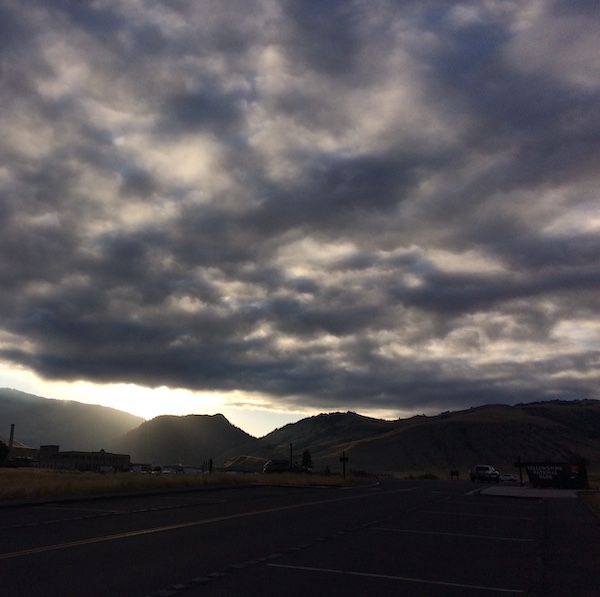
We walked out of the bustling hotel lobby into the stillness of a crisp mountain morning. It was the end of September, well into the annual elk rut. Gone was the previous evening’s circus of bull-horn-brandishing rangers trying to keep space between territorial bulls and camera-wielding tourists. This new day was calm and quiet. My husband and our oldest were hiking Bunsen Peak. Although our morning plan to explore the Mammoth Hot Springs area was considerably less physically demanding, the younger two kids and I faced a challenge of our own: walking the gauntlet between the hotel and the chapel.
“Don’t worry. I won’t risk our lives to get there,” I told the kids as we set off down the sidewalk.
Of all Yellowstone’s developments, Mammoth most closely resembles an actual town. Beyond the expected hotel, store, gas station, and post office, there’s also a medical clinic, a federal courthouse, and historic homes with welcoming porches that front one of two main roads. With its sidewalks and stop signs, it feels familiar—civilized and safe.
This is a problem.
It’s a problem because I forget. I forget the weight of where I am. Before long, I’m walking on autopilot, oblivious to the fact that the presence of a sidewalk doesn’t take the wild out of wildlife.
So there I was. Walking on autopilot. Leading my kids through a strung-out elk herd. During the rut. The scat ground into the cement should have reminded me of that. But, comfortable on my sidewalk in the wilderness, I was already too far gone.
“There’s the bull, Mom,” my daughter pointed out.
I rallied enough to see that yes, there he was—standing in the center of the lawn between the last house and the chapel. Instead of backing away, I simply switched our trajectory. We left the sidewalk, crossed the road, and walked the remaining few yards along the edge furthest from the bull. And then we crossed back over.
“I thought you said we weren’t going to risk our lives,” my daughter said as we climbed the chapel stairs.
“We didn’t,” I started. Then I remembered my delusional thinking about sidewalks and realized what I had done. “Sorry.”
This isn’t entirely dissimilar to how I live my life. And this is a problem because the attention I give to the path I’m walking—at home, at work, in the wilderness, or in-between—determines how I’ll negotiate the topography of the day.
Maybe you can identify.
I’m sharing more about how not to miss your life over at Anthem of the Adventurer. I’d love it if you joined me over there to finish reading it. Just click here.
Happy trails ~
Natalie 🥾
I often share tales from the trail at
Inspire Me Monday, #TellHisStory,
Faith on Fire, and Let’s Have Coffee.